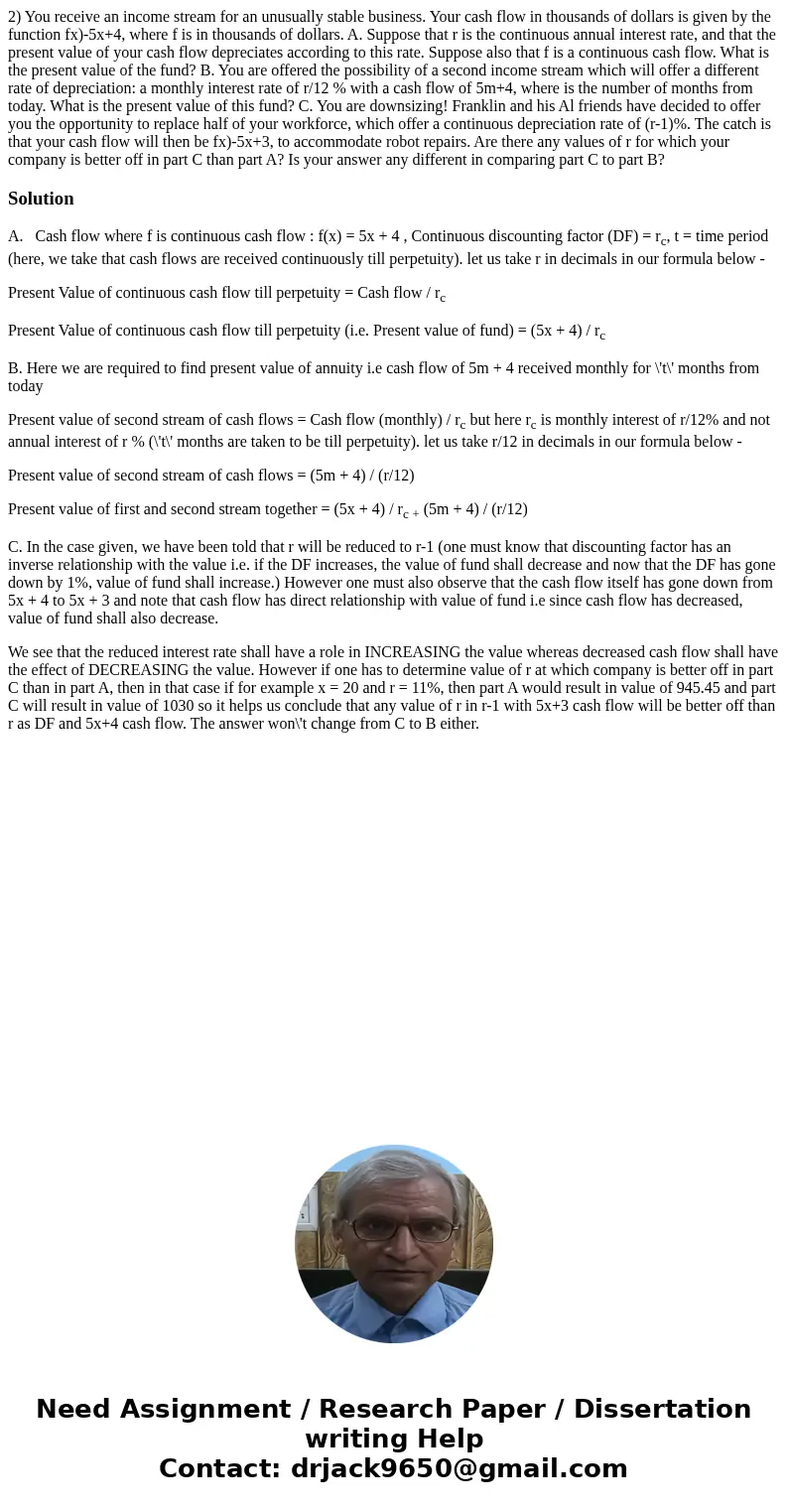2 You receive an income stream for an unusually stable busin
Solution
A. Cash flow where f is continuous cash flow : f(x) = 5x + 4 , Continuous discounting factor (DF) = rc, t = time period (here, we take that cash flows are received continuously till perpetuity). let us take r in decimals in our formula below -
Present Value of continuous cash flow till perpetuity = Cash flow / rc
Present Value of continuous cash flow till perpetuity (i.e. Present value of fund) = (5x + 4) / rc
B. Here we are required to find present value of annuity i.e cash flow of 5m + 4 received monthly for \'t\' months from today
Present value of second stream of cash flows = Cash flow (monthly) / rc but here rc is monthly interest of r/12% and not annual interest of r % (\'t\' months are taken to be till perpetuity). let us take r/12 in decimals in our formula below -
Present value of second stream of cash flows = (5m + 4) / (r/12)
Present value of first and second stream together = (5x + 4) / rc + (5m + 4) / (r/12)
C. In the case given, we have been told that r will be reduced to r-1 (one must know that discounting factor has an inverse relationship with the value i.e. if the DF increases, the value of fund shall decrease and now that the DF has gone down by 1%, value of fund shall increase.) However one must also observe that the cash flow itself has gone down from 5x + 4 to 5x + 3 and note that cash flow has direct relationship with value of fund i.e since cash flow has decreased, value of fund shall also decrease.
We see that the reduced interest rate shall have a role in INCREASING the value whereas decreased cash flow shall have the effect of DECREASING the value. However if one has to determine value of r at which company is better off in part C than in part A, then in that case if for example x = 20 and r = 11%, then part A would result in value of 945.45 and part C will result in value of 1030 so it helps us conclude that any value of r in r-1 with 5x+3 cash flow will be better off than r as DF and 5x+4 cash flow. The answer won\'t change from C to B either.

 Homework Sourse
Homework Sourse